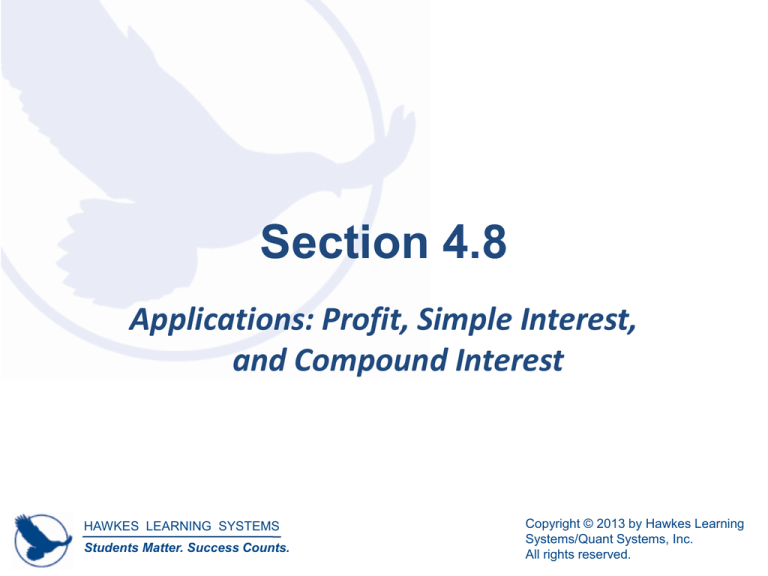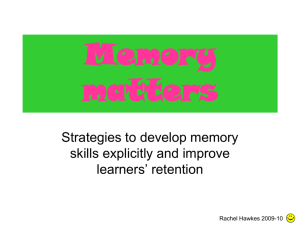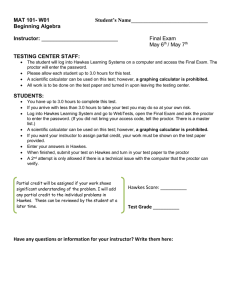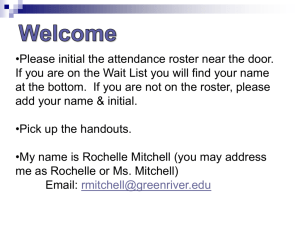
Section 4.8
Applications: Profit, Simple Interest,
and Compound Interest
HAWKES LEARNING SYSTEMS
Students Matter. Success Counts.
Copyright © 2013 by Hawkes Learning
Systems/Quant Systems, Inc.
All rights reserved.
Objectives
o Understand percent of profit.
o Calculate simple interest.
o Calculate compound interest.
HAWKES LEARNING SYSTEMS
Students Matter. Success Counts.
Copyright © 2013 by Hawkes Learning
Systems/Quant Systems, Inc.
All rights reserved.
Percent of Profit
Profit and Percent of Profit
Profit: The difference between selling price and cost.
Profit = Selling price – Cost
Profit = $100 – $80 = $20
Percent of Profit: There are two types; both are
ratios with profit in the numerator.
HAWKES LEARNING SYSTEMS
Students Matter. Success Counts.
Copyright © 2013 by Hawkes Learning
Systems/Quant Systems, Inc.
All rights reserved.
Profit and Percent of Profit
Profit and Percent of Profit (cont.)
1. Percent of profit based on cost: (Cost is the
denominator.)
Profit
% of profit based on cost 20 1 25%
Cost
80 4
HAWKES LEARNING SYSTEMS
Students Matter. Success Counts.
Copyright © 2013 by Hawkes Learning
Systems/Quant Systems, Inc.
All rights reserved.
Profit and Percent of Profit
Profit and Percent of Profit (cont.)
2. Percent of profit based on selling price: (Selling
price is the denominator.)
Profit
% of profit based on selling price
Selling Price
20 1
20%
100 5
HAWKES LEARNING SYSTEMS
Students Matter. Success Counts.
Copyright © 2013 by Hawkes Learning
Systems/Quant Systems, Inc.
All rights reserved.
Example 1: Calculating Percent of Profit
A retail store markets calculators that cost the store
$45 each and are sold to customers for $60 each.
a. What is the profit on each calculator?
Solution
To find the profit,
$60.00 selling price
45.00 cost
$15.00 profit
The profit is $15 per calculator.
HAWKES LEARNING SYSTEMS
Students Matter. Success Counts.
Copyright © 2013 by Hawkes Learning
Systems/Quant Systems, Inc.
All rights reserved.
Example 1: Calculating Profit and Percent of
Profit (cont.)
For b. and c., use a ratio and then change the fraction
to a percent to find each percent of profit.
b. What is the percent of profit based on cost?
Solution
For profit based on cost, remember that cost is in the
denominator.
$15 profit 1
1
33 %
$45 cost
3
3
HAWKES LEARNING SYSTEMS
Students Matter. Success Counts.
profit based on cost
Copyright © 2013 by Hawkes Learning
Systems/Quant Systems, Inc.
All rights reserved.
Example 1: Calculating Profit and Percent of
Profit (cont.)
c. What is the percent of profit based on selling price?
Solution
For profit based on selling price, remember that selling
price is in the denominator.
$15 profit
1
25%
$60 selling price 4
HAWKES LEARNING SYSTEMS
Students Matter. Success Counts.
profit based on selling price
Copyright © 2013 by Hawkes Learning
Systems/Quant Systems, Inc.
All rights reserved.
Simple Interest
Formula for Calculating Simple Interest
I P ∙ r ∙ t,
where
I = interest (earned or paid)
P = principal (the amount invested or
borrowed)
r = rate of interest (stated as an annual rate)
in decimal number or fraction form
t = time (one year or fraction of a year)
HAWKES LEARNING SYSTEMS
Students Matter. Success Counts.
Copyright © 2013 by Hawkes Learning
Systems/Quant Systems, Inc.
All rights reserved.
Simple Interest
Formula for Calculating Simple Interest (cont.)
Note: For calculation purposes, we will use 360 days
in one year and 30 days in a month. However,
many lending institutions now (with the advent
of computers) base their calculations on 365
days per year and pay or charge interest on a
daily basis.
HAWKES LEARNING SYSTEMS
Students Matter. Success Counts.
Copyright © 2013 by Hawkes Learning
Systems/Quant Systems, Inc.
All rights reserved.
Example 2: Calculating Simple Interest
You want to borrow $2000 from your bank for one year.
If the interest rate is 5.5%, how much interest would
you pay?
Solution
Use the formula for simple interest: I P r t , with
P $2000, r 5.5% 0.055, and t 1 year
I 2000 0.055 1 110
You will pay $110 in interest.
HAWKES LEARNING SYSTEMS
Students Matter. Success Counts.
Copyright © 2013 by Hawkes Learning
Systems/Quant Systems, Inc.
All rights reserved.
Completion Example 3: Calculating Simple
Interest
Sylvia borrowed $2400 at 5% interest for 90 days
(3 months). How much interest did she have to pay?
Solution
1
90
P $2400 r 5% 0.05
___ and t 90 days
yr 4 yr
360
1
$30_
I _____
2400 _____
0.05 _____
4 ____
$30
Sylvia had to pay ________
in interest.
HAWKES LEARNING SYSTEMS
Students Matter. Success Counts.
Copyright © 2013 by Hawkes Learning
Systems/Quant Systems, Inc.
All rights reserved.
Completion Example 3: Calculating Simple
Interest (cont.)
If you know the values of any three of the variables in
the formula I = P ∙ r ∙ t, you can find the unknown value
by substituting into the formula and solving for the
unknown. This procedure is illustrated in Examples 4
and 5.
HAWKES LEARNING SYSTEMS
Students Matter. Success Counts.
Copyright © 2013 by Hawkes Learning
Systems/Quant Systems, Inc.
All rights reserved.
Example 4: Calculating Principal using Simple
Interest
What principal would you need to invest at a rate of 6%
to earn $450 in 6 months?
Solution
Here the principal P is unknown. We do know
6 1
I $450, r 6% 0.06, and t yr.
12 2
HAWKES LEARNING SYSTEMS
Students Matter. Success Counts.
Copyright © 2013 by Hawkes Learning
Systems/Quant Systems, Inc.
All rights reserved.
Example 4: Calculating Principal using Simple
Interest (cont.)
Substituting and solving for P, we have
1
450 P 0.06
2
450 P 0.03
450 P 0.03 Divide both sides by 0.03.
0.03
0.03
15,000 P
You would need to invest $15,000 to earn $450 in
6 months at a rate of 6%.
HAWKES LEARNING SYSTEMS
Students Matter. Success Counts.
Copyright © 2013 by Hawkes Learning
Systems/Quant Systems, Inc.
All rights reserved.
Example 5: Calculating Time using Simple
Interest
Stuart wants to borrow $1500 from his father and is
willing to pay $15 in interest. His father told Stuart that
he would want interest at 4%. How long can Stuart
keep the money?
Solution
In this case, the unknown is time t. We do know
I $15, r 4% 0.04, and P $1500
HAWKES LEARNING SYSTEMS
Students Matter. Success Counts.
Copyright © 2013 by Hawkes Learning
Systems/Quant Systems, Inc.
All rights reserved.
Example 5: Calculating Time using Simple
Interest (cont.)
Substituting and solving for t gives
15 1500 0.04 t
15 60 t
15 60 t
60 60
1
t
4
Divide both sides by 60.
1
Stuart can keep the money for yr (or 3 months).
4
HAWKES LEARNING SYSTEMS
Students Matter. Success Counts.
Copyright © 2013 by Hawkes Learning
Systems/Quant Systems, Inc.
All rights reserved.
Compound Interest
To Calculate Compound Interest
Step 1: Use the formula I = P r t, to calculate
simple interest.
1
Let t where n is the number of periods
n
per year for compounding.
For example:
1
for compounding annually, n = 1 and t 1.
1
HAWKES LEARNING SYSTEMS
Students Matter. Success Counts.
Copyright © 2013 by Hawkes Learning
Systems/Quant Systems, Inc.
All rights reserved.
Compound Interest
To Calculate Compound Interest (cont.)
1
for compounding semiannually, n = 2 and t
2
1
for compounding quarterly, n = 4 and t
4
1
for compounding bi-monthly, n = 6 and t
6
1
for compounding monthly, n = 12 and t
12
HAWKES LEARNING SYSTEMS
Students Matter. Success Counts.
Copyright © 2013 by Hawkes Learning
Systems/Quant Systems, Inc.
All rights reserved.
Compound Interest
To Calculate Compound Interest (cont.)
1
.
for compounding daily, n = 360 and t
360
Step 2: Add this interest to the principal to create a
new value for the principal.
Step 3: Repeat steps 1 and 2 however many times the
interest is to be compounded.
HAWKES LEARNING SYSTEMS
Students Matter. Success Counts.
Copyright © 2013 by Hawkes Learning
Systems/Quant Systems, Inc.
All rights reserved.
Example 6: Calculating Compound Interest
If a savings account of $1200 is compounded annually
(once a year) at 5%, how much interest will be earned
in three years?
Solution
The account is compounded annually, so n = 1 and
1
t 1.
1
Use the formula for simple interest, I = P ⋅ r ⋅ t,
with r = 5% = 0.05 and t = 1.
The principal will change each year.
HAWKES LEARNING SYSTEMS
Students Matter. Success Counts.
Copyright © 2013 by Hawkes Learning
Systems/Quant Systems, Inc.
All rights reserved.
Example 6: Calculating Compound Interest
(cont.)
a. First year: the principal is P = $1200
I $1200 0.05 1 $60 interest for the first year.
b. Second year: the new principal is
P = $1200 + $60 = $1260
I $1260 0.05 1 $63 interest for the second year.
c. Third year: the new principal is
P = $1260 + $63 = $1323
I $1323 0.05 1 $66.15 interest for the third year.
HAWKES LEARNING SYSTEMS
Students Matter. Success Counts.
Copyright © 2013 by Hawkes Learning
Systems/Quant Systems, Inc.
All rights reserved.
Example 6: Calculating Compound Interest
(cont.)
The total interest earned in three years will be
$ 60.00
63.00
+ 66.15
$189.15
(Note that, because the principal is larger each year,
the interest earned increases each year.)
HAWKES LEARNING SYSTEMS
Students Matter. Success Counts.
Copyright © 2013 by Hawkes Learning
Systems/Quant Systems, Inc.
All rights reserved.
Example 7: Calculating Compound Interest
If an account of $5000 is compounded monthly
(12 times a year) at 6%, what will be the balance in the
account at the end of four months?
Solution
1
The account is compounded monthly, so n = 12 and t .
12
Use the formula for simple interest, I = P ⋅ r ⋅ t,
1
with r = 6% = 0.06 and t .
12
The principal will change each month.
HAWKES LEARNING SYSTEMS
Students Matter. Success Counts.
Copyright © 2013 by Hawkes Learning
Systems/Quant Systems, Inc.
All rights reserved.
Example 7: Calculating Compound Interest
(cont.)
a. First month: the principal is P = $5000.
1
I $5000 0.06 $25.00 interest for the first
12
month
b. Second month: the new principal is
P = $5000 + $25 = $5025.00.
1
I $5025 0.06 $25.13 interest for the second
12
month
HAWKES LEARNING SYSTEMS
Students Matter. Success Counts.
Copyright © 2013 by Hawkes Learning
Systems/Quant Systems, Inc.
All rights reserved.
Example 7: Calculating Compound Interest
(cont.)
c. Third month: the new principal is
P = $5025 + $25.13 = $5050.13.
1
I $5050.13 0.06 $25.25 interest for the third
12
month
d. Fourth month: the new principal is
P = $5050.13 + $25.25 = $5075.38.
1
I $5075.38 0.06 $25.38 interest for the
12
fourth month
HAWKES LEARNING SYSTEMS
Students Matter. Success Counts.
Copyright © 2013 by Hawkes Learning
Systems/Quant Systems, Inc.
All rights reserved.
Example 7: Calculating Compound Interest
(cont.)
The total interest earned in four months will be
$ 25.00
25.13
25.25
+ 25.38
$100.76
The balance in the account will be
$5000.00 + $100.76 = $5100.76.
HAWKES LEARNING SYSTEMS
Students Matter. Success Counts.
Copyright © 2013 by Hawkes Learning
Systems/Quant Systems, Inc.
All rights reserved.
Compound Interest
Notes
Loans in savings accounts, house payments, and credit
card debts are based on compound interest,
compounded daily over periods of years. The
calculations, including monthly earnings or payments,
are generally performed with computers. These
calculations are related to the compound interest
formula
nt
r
A P 1 .
n
HAWKES LEARNING SYSTEMS
Students Matter. Success Counts.
Copyright © 2013 by Hawkes Learning
Systems/Quant Systems, Inc.
All rights reserved.
Practice Problems
1. A company manufactures and sells plastic boxes
that cost $21 each to produce, and that sell for $28
each.
a. How much profit does the company make on
each box?
b. What is the percent of profit based on cost?
c. What is the percent of profit based on selling
price?
2. If you were to borrow $1000 at 5% for nine months,
how much interest would you pay?
HAWKES LEARNING SYSTEMS
Students Matter. Success Counts.
Copyright © 2013 by Hawkes Learning
Systems/Quant Systems, Inc.
All rights reserved.
Practice Problems (cont.)
3. What interest rate would you be paying if you
borrowed $1000 for 6 months and paid $60 in
interest?
4. You deposit $1500 at 4% to be compounded
semiannually. How much interest will you earn in
3 years?
5. A principal of $2500 is deposited at 6% to be
compounded monthly. How much will the account
be worth in 6 months?
HAWKES LEARNING SYSTEMS
Students Matter. Success Counts.
Copyright © 2013 by Hawkes Learning
Systems/Quant Systems, Inc.
All rights reserved.
Practice Problem Answers
1. a. $7
1
b. 33 %
3
c. 25%
2. $37.50
3. 12%
4. $189.24
5. $2575.94
HAWKES LEARNING SYSTEMS
Students Matter. Success Counts.
Copyright © 2013 by Hawkes Learning
Systems/Quant Systems, Inc.
All rights reserved.




